March 7, 2016
Yangon (a/k/a Rangoon): Sule Pagoda, Colonial District, Chinatown
After 12 hours and only three stops (for food, peeing, and bus transfers), we finally reached the bus station on the outskirts of Yangon. I was grateful to step off the frigid bus, into the heat and humidity. The taxi ride into the city took another 45 minutes, and we reached the Clover City Center Plus Hotel at 7:15 in the morning, where they thankfully let us check in almost seven hours early. We immediately dove under the covers and took a nice warm three-hour nap.
At the Clover City Center Plus, we have a Deluxe room, no breakfast, at $49 per night for two nights. The room is pretty plain but very clean and quite adequate. It has a kettle so we can make our own coffee, a definite plus. Our window overlooks the swimming pool of the high-priced, upscale Sule Shangri-La Hotel across the narrow street. The hotel is on 32nd Street (which is more like an alley), just off Bogyoke Aung San Road, in walking distance of Sule Pagoda.
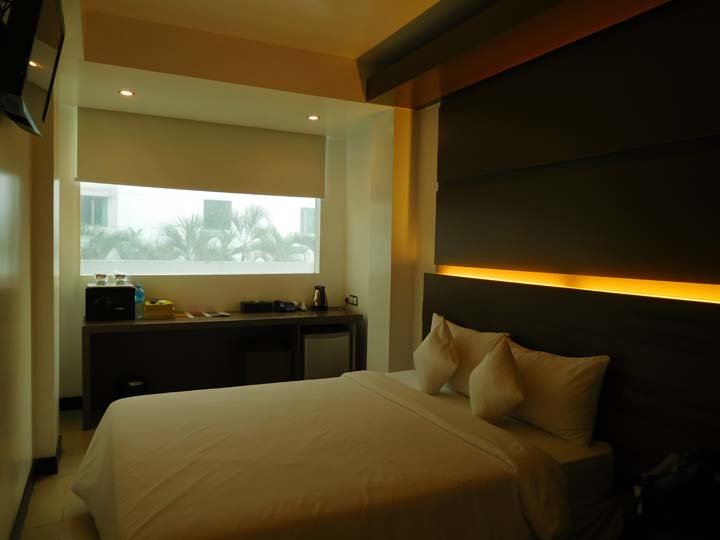
Clover City Center Plus Hotel room, Yangon
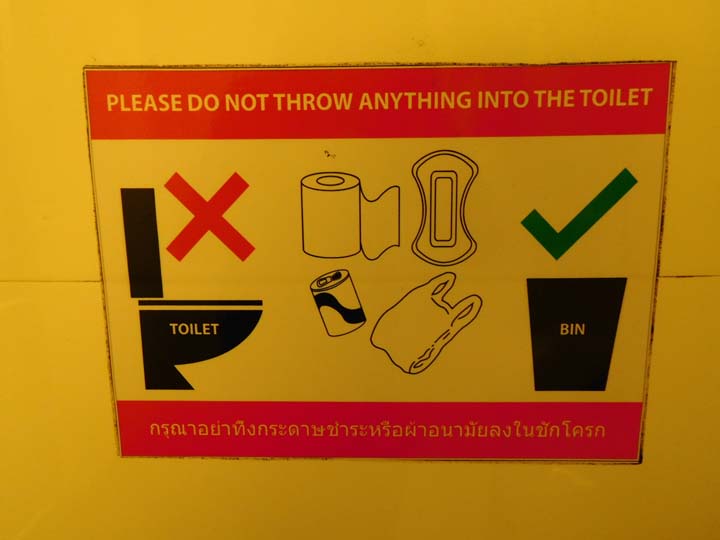
Who's been throwing cans and plastic bags in the toilet?!?
Yangon lost its status as the capital of Myanmar in 2005, but it is still the country's principal city, economic hub, and has the largest population by far, with well over 5 million residents. In contrast, the next most populous city is Mandalay, with around 1.25 million. Along with the majority Burmese population, Yangon has large Indian and Chinese communities, with numerous ethnic and religious minorities represented as well. We have found the melting pot of Myanmar, and it is Yangon!
In the early afternoon, we walked to Sule Pagoda. Walking is a little less precarious in Yangon than in the rest of Myanmar because motorcycles and scooters are banned from the city, so you don't have to dodge the weaving motorbikes, but it makes traffic even more congested if you're traveling by car.
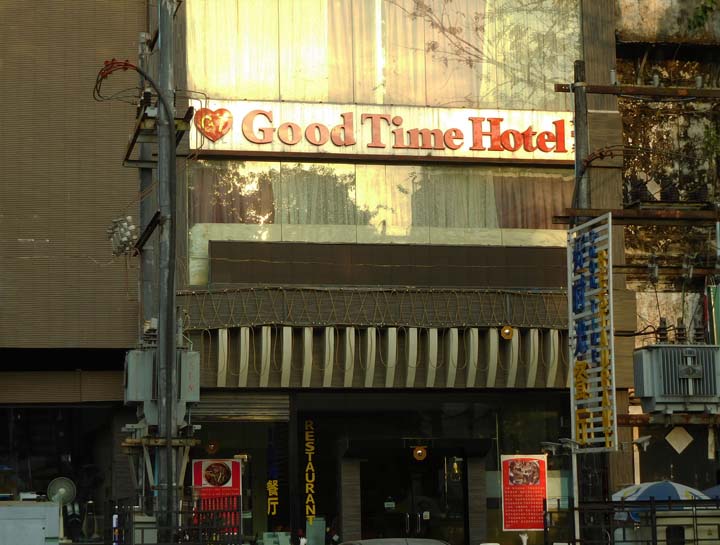
Love you long time?
Sule Pagoda is located in the middle of a busy traffic circle, surrounded by shops and high-rise buildings. The pagoda was used as the center point of Rangoon when the British laid out their grid-plan for the city in the mid 1800s and is the point from which all distances to and from Yangon are measured. When we visited, the stupa was surrounded by scaffolding and undergoing a periodic restoration.
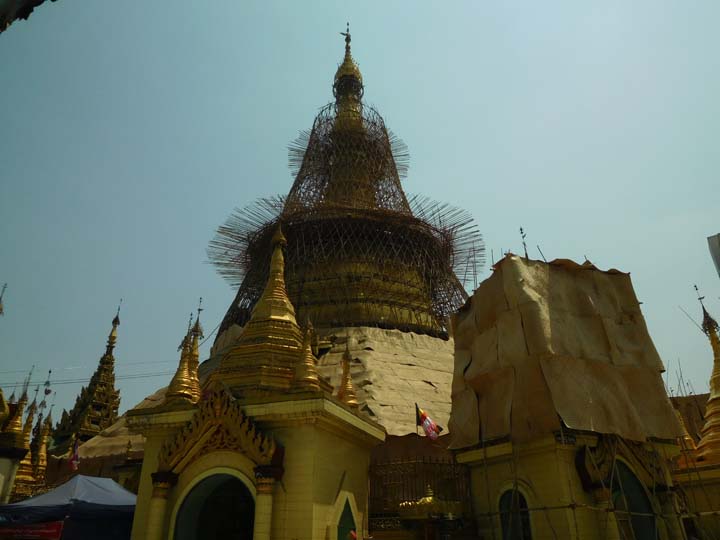
Sule Pagoda main stupa
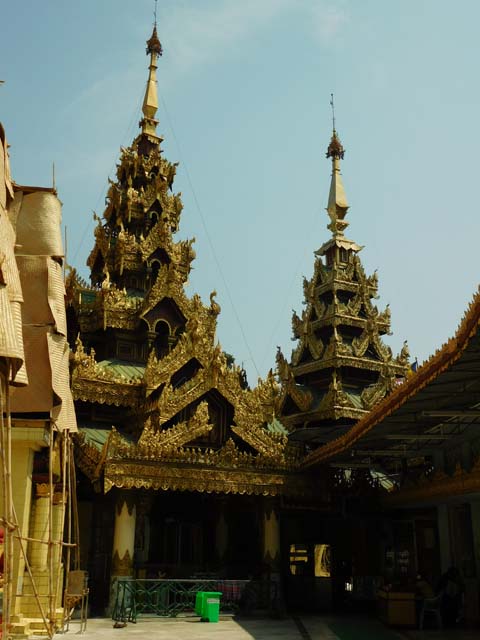
Prayer pavilions at Sule Pagoda
Sule Pagoda is said to be 2,500 years old and is believed to enshrine a strand of hair of the Buddha himself. Notably, the pagoda was the venue for pro-democracy protests in 1988, when the military opened fire on unarmed monks, garnering the attention of the world, and was again a gathering point for protesters in 2007 during the Saffron Revolution.
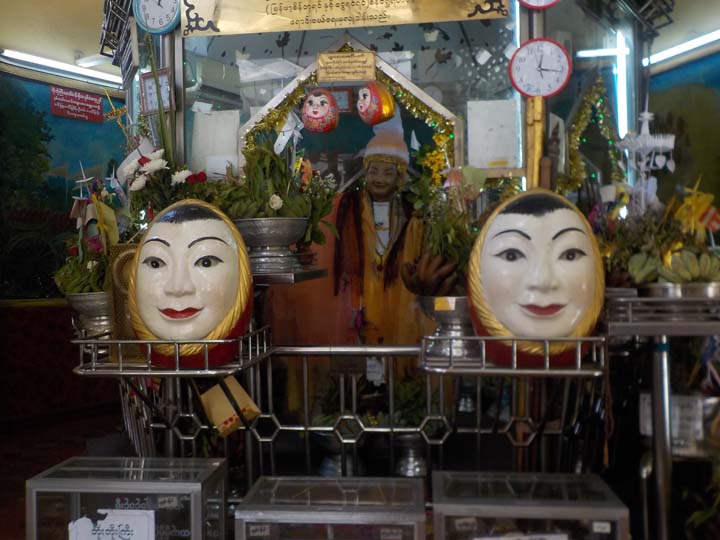
Nat (spirit) shrine, Sule Pagoda
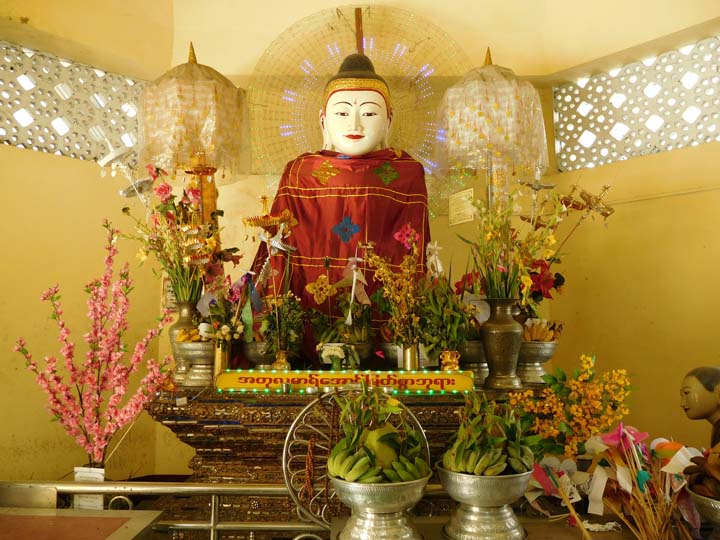
Banana Buddha
As we entered the main terrace, a young man approached us named Emanuel Khan. He explained he was named Emanuel by his mother, a Christian, but religion is patrilineal in Burma, so he was raised a Buddhist like his father and was a monk for four years. He now helps to run an orphanage. Yes, of course we ended up making a donation to the orphanage.
Emanuel showed us around the pagoda and told us our Burmese Buddhist zodiac animal signs. They base their calendar on an eight-day week, the number eight being considered lucky. To accommodate the extra day, the ancient Burmese monks split Wednesday in half, a.m. and p.m. I was born on Saturday, so my sign is the dragon. Tom was born on Wednesday afternoon, making his sign the elephant without tusks.
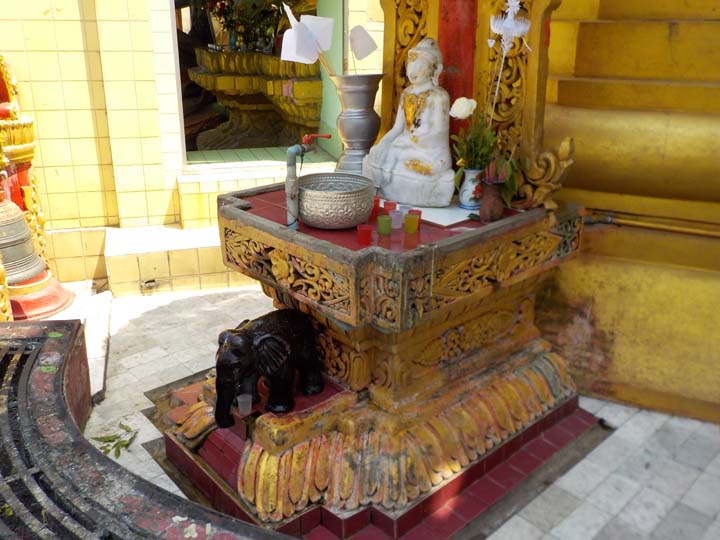
Tom's animal sign, the elephant with no tusks
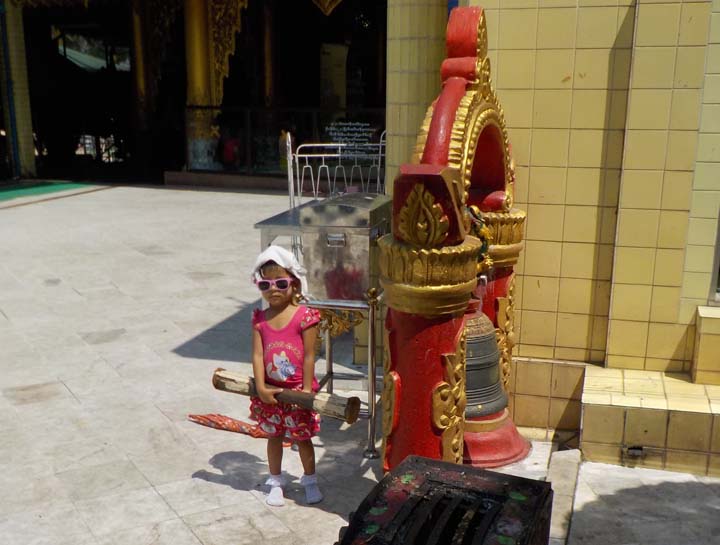
Little girl ringing big bell
Note: It's common in Myanmar at religious sites and even on the street for water to be provided free for anyone, along with a community cup.
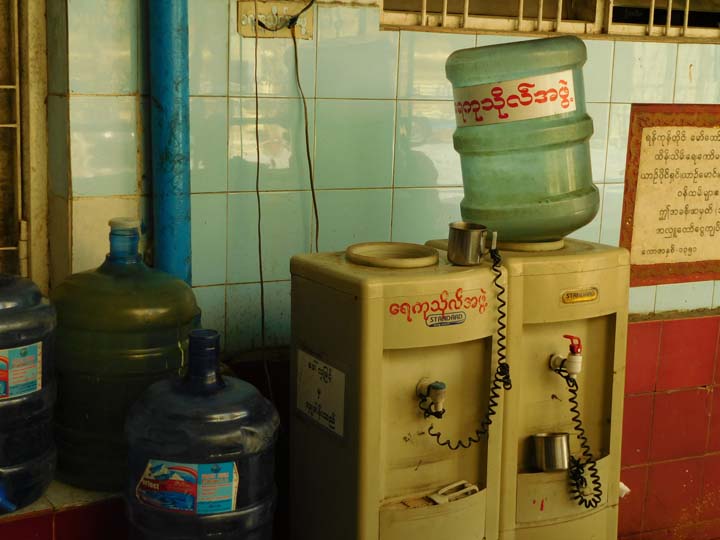
Free water for all - You can even use our cup
It was a very hot and sunny afternoon, the hottest of the trip so far, in the mid to upper 90s with the sun right overhead. We returned to the hotel for sunscreen and decided to have lunch at the hotel coffee shop, very good beef curry and Hong Kong noodles with pork. Throughout the trip, we've been served a condiment of garlic and hot chile peppers in fish sauce, which we love. Today's was ESPECIALLY spicy!
Late in the afternoon, we ventured back out in the heat to walk around the city center and over to the Yangon River, looking at old buildings from the British colonial times. Yangon has the largest collection of colonial architecture in Southeast Asia. Many of the grand old structures have been used as tenements for decades since the British departure in 1948 and are in an advanced state of decrepitude, but others are in the process of being restored and are quite attractive.
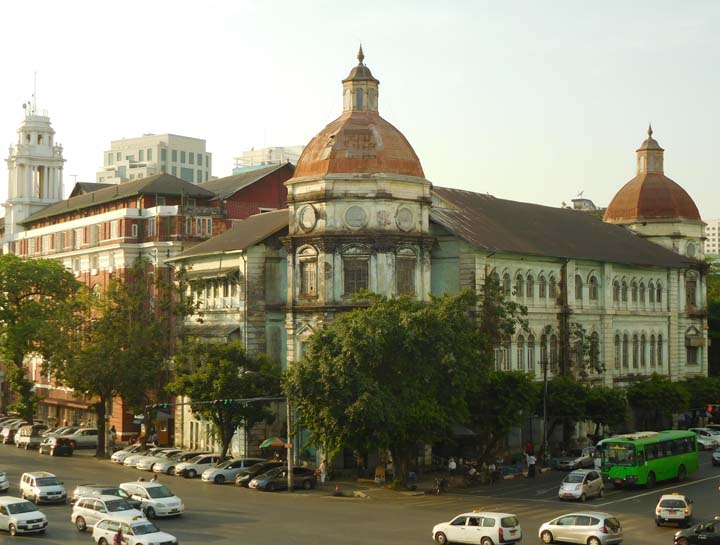
Faded colonial glory
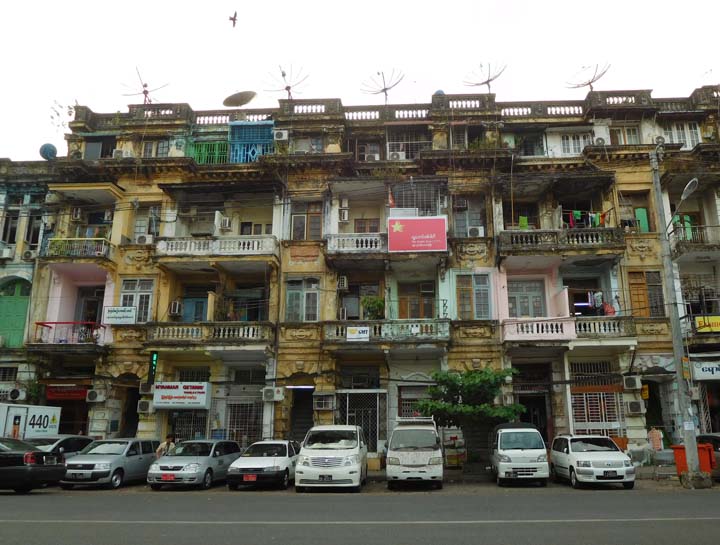
Advanced decay
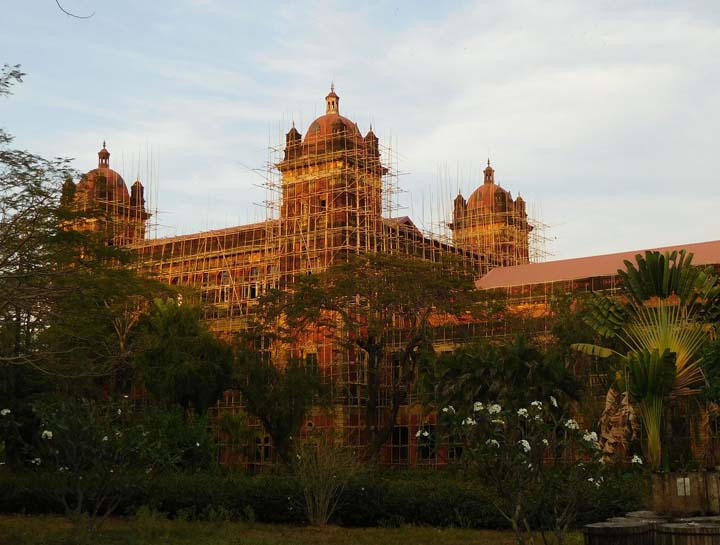
Undergoing restoration
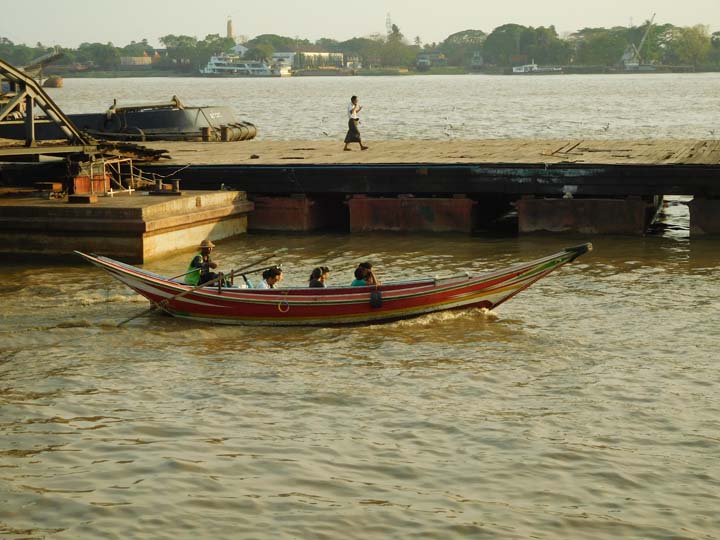
Yangon Riverfront
In the evening we took a taxi to Chinatown. At night the district is a sprawling collection of produce stands, restaurants, and street food. The area was vibrant, colorful, and teeming with throngs of people. The street food stalls in Myanmar typically have child-sized tables and chairs, while restaurants with a more permanent presence have full-size seating.
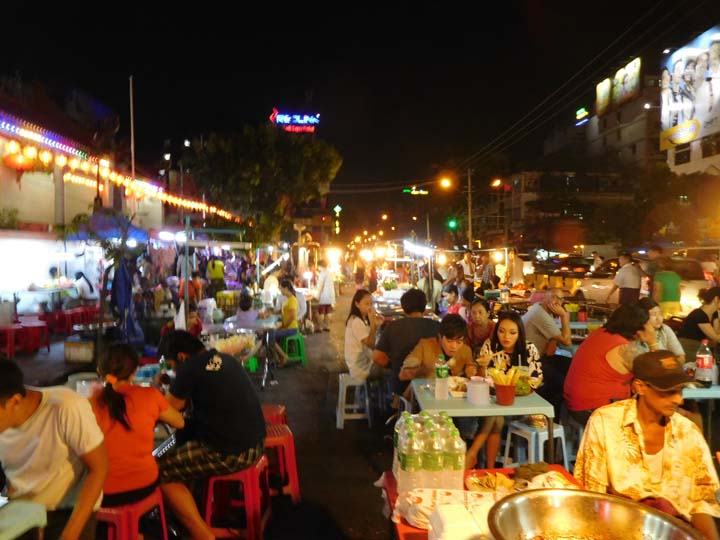
Chinatown dining
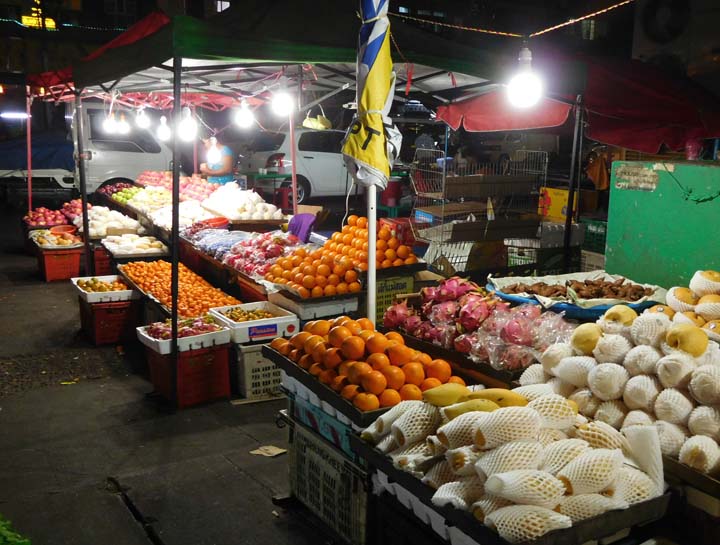
Picturesque produce
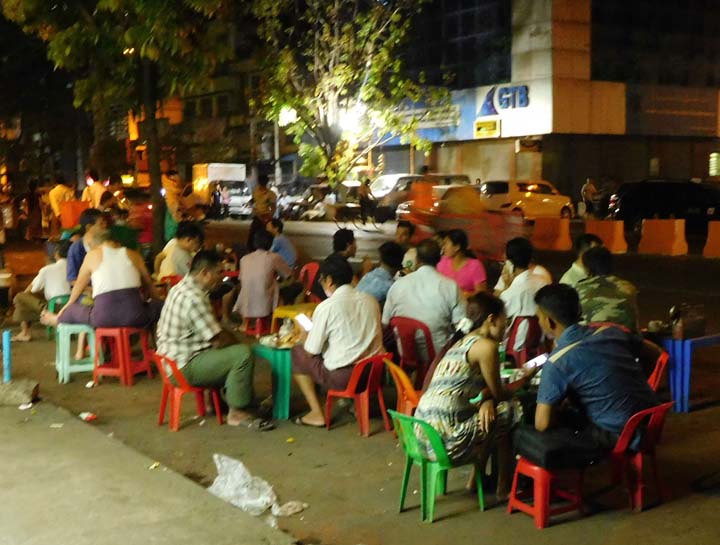
Seating for street food
The food in Chinatown smelled delicious, but every restaurant was either packed, looked dirty, or both. We wound up eating on the outskirts of Chinatown at Singapore Food Junction, where we had fried sliced pork with a couple of tasty dipping sauces and draft Dagon Beer. Dinner was served to the accompaniment of bad karaoke. I was almost the only woman in the place. I don't know why.
Back at the hotel, we showered off the sweat of the day, and I fell asleep to the dulcet tones of the BBC News on the TV.
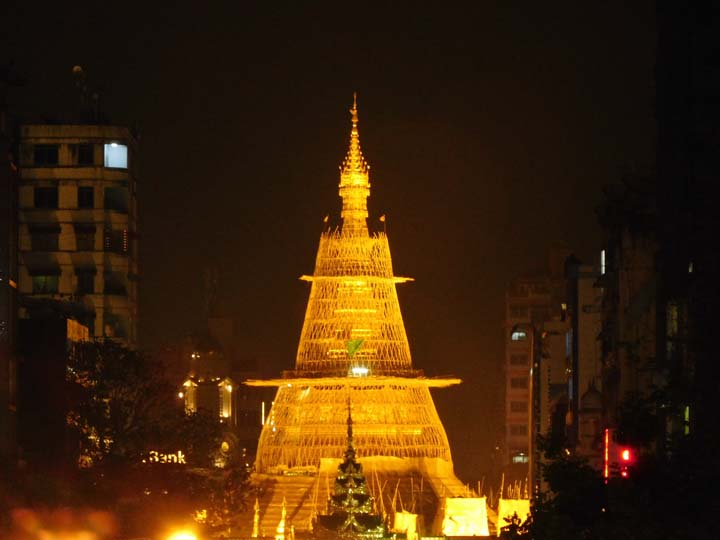
Sule Pagoda at night
|

















